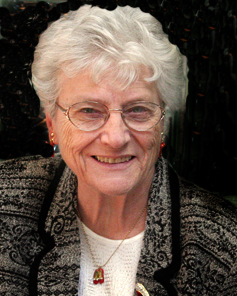
The following appeared in The Rose History in 1911.
Rock County Village (continued from 01-21-20 edition of the Star Herald)
Bruce
On section 30, Martin township, two miles west of Hills, is located the Illinois Central station of Bruce. In addition to the depot the business houses of the unpretentious hamlet are confined to a general store and two elevators. Bruce has known better days. At the time of its founding, it gave promise of eventually taking high rank among the communities of Rock county. Its season of glory was short lived, however, and it was forced to bow to the stern decree of fate while yet an infant.
The first intimation of a Rock county town on the Martin township prairies was received in November, 1887, when the Illinois Central authorities, whose railroad had just made entry into the county, located a station on J. H. Helgeson’s farm, on section 30.10 Before December was over, the company had built a side track on the side of the town-to-be, which it proposed to name Martin. The station bore that appellation only a few months, and then was christened Bruce, in honor of one of the chief officials of the Illinois Central.
Unlike some of Rock county’s towns, there was no long lapse of time before it responded to the hopes of its sponsors. Activity began with a rush in Bruce during the first year of its existence, which was also the one of its fullest development. The survey of the townsite was made in May, 1888, by J. F. Whalen. The plat, indicative of the expectation of the promoters, was made to include sixteen blocks. The dedication by John Butler and Charles E. Moore took place May 22 and the day following record was made in the office of the register of deeds.11
The boom commenced at once. Hickey & Co. were the first on the ground and built a grain warehouse. The depot was erected about the same time, in the month of June, and G. B. Hartley was installed as the first agent. John Butler, one of the owners of the townsite, was especially active in the promotion of building operations. During the summer he erected a hotel, which was first conducted by M. McCarthy and later in the same year by Andrew Nelson; a store building, in which the first merchants, Fransen & Miller, were located; and a second warehouse, with a capacity of 30,000 bushels of grain. A second general store was established by Jacobson & Sexe before the year was over, as was also a blacksmith shop by Ole Lund. During the summer an attempt was made by George Bollinger to conduct a saloon in Bruce. He was refused the necessary license by the county commissioners, but proceeded, nevertheless, in violation of the law. This action led to his arrest and conviction in December.
The postoffice was established in the store of Jacobson & Sexe in 1888. J. N. Jacobson conducted the office as deputy until September, 1889, when he was regularly commissioned postmaster. Bruce progressed to a noticeable degree during the second year of life.
Early in the spring of 1890 the existence of Bruce was threatened, because of the founding of the town of Hills, two miles away at the intersection of the Illinois Central with the new Sioux City & Northern railroad. It became evident to the business men of Bruce that their interests were certain to suffer in competition with the rival favored by a more strategic location. In February a hotel closed its doors and March witnessed the removal across the fields of Bruce’s leading business establishment, the Jacobson & Sexe store, as well as the blacksmith shop.12 What few buildings remained in the once promising community of Bruce were deserted.
11“Bruce, the new station in Rock county, Minnesota, midway between Sioux Falls and Rock Rapids, has been platted and no doubt will be a town of two hundred souls before the leaves begin to fall.”—Rock Rapids Reporter, May, 1888.
12“The little town of Bruce on the Sioux Falls branch of the Illinois Central, in Martin township, Rock county, is about depopulated on account of its people moving, bag and baggage, over to Hills, the new town on the Northern named after the general manager of the road, Hills is about a mile and a half east of Bruce, and the only blacksmith shop, grain buying establishment and general store in Bruce have been moved to Hills. The postoffice will probably follow in short order.”—Sioux City Journal, March, 1900.
The story of the village of Bruce will continue and the village of Kanaranzi will begin in the Feb. 4 edition of the Star Herald.
Donations to the Rock County Historical Society can be sent to the Rock County Historical Society, 312 E. Main Street, Luverne, MN 56156.
Mann welcomes correspondence sent to mannmade@iw.net.



